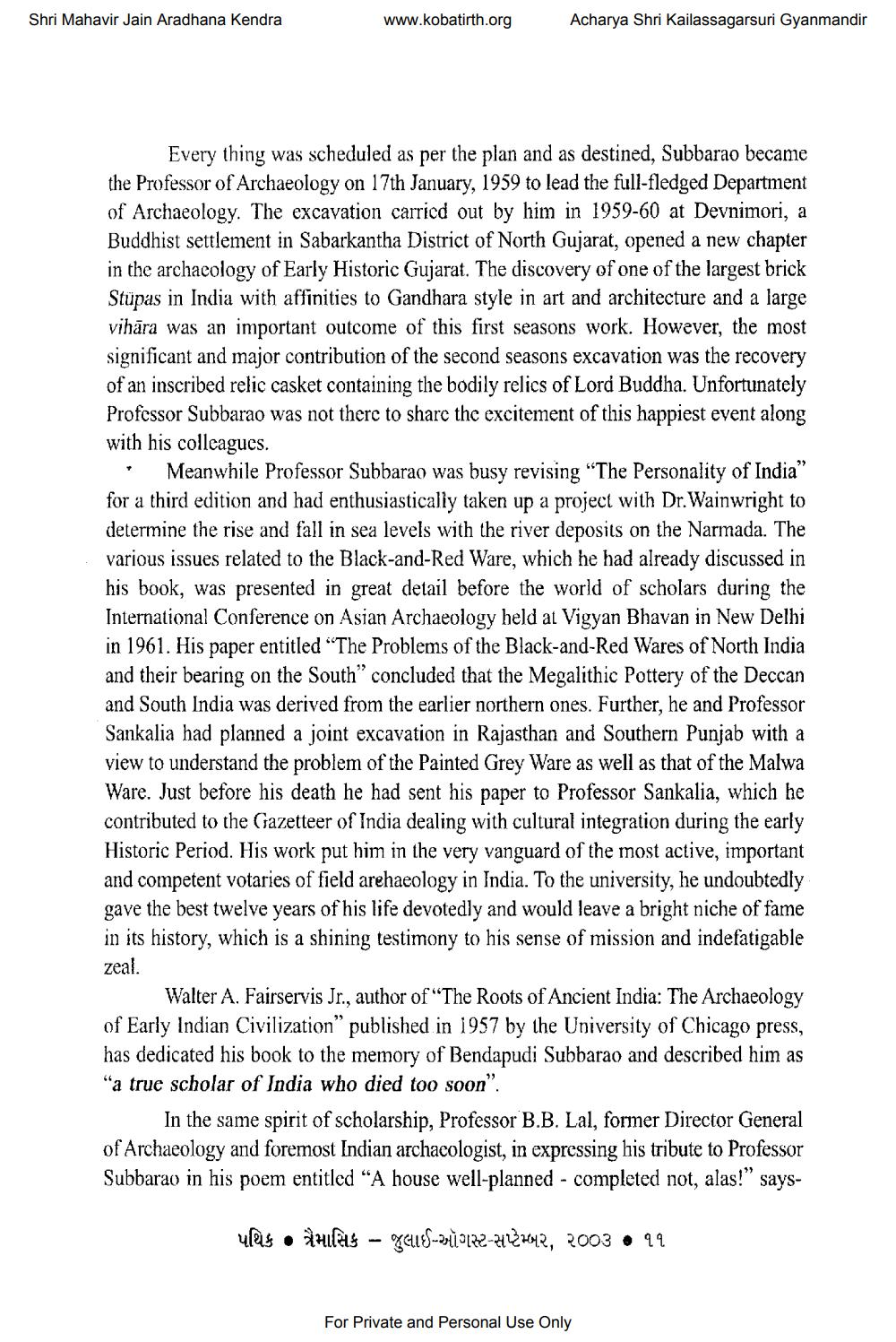________________
Shri Mahavir Jain Aradhana Kendra
www.kobatirth.org
Every thing was scheduled as per the plan and as destined, Subbarao became the Professor of Archaeology on 17th January, 1959 to lead the full-fledged Department of Archaeology. The excavation carried out by him in 1959-60 at Devnimori, a Buddhist settlement in Sabarkantha District of North Gujarat, opened a new chapter in the archaeology of Early Historic Gujarat. The discovery of one of the largest brick Stupas in India with affinities to Gandhara style in art and architecture and a large vihāra was an important outcome of this first seasons work. However, the most significant and major contribution of the second seasons excavation was the recovery of an inscribed relic casket containing the bodily relics of Lord Buddha. Unfortunately Professor Subbarao was not there to share the excitement of this happiest event along with his colleagues.
▾
Acharya Shri Kailassagarsuri Gyanmandir
Meanwhile Professor Subbarao was busy revising "The Personality of India" for a third edition and had enthusiastically taken up a project with Dr.Wainwright to determine the rise and fall in sea levels with the river deposits on the Narmada. The various issues related to the Black-and-Red Ware, which he had already discussed in his book, was presented in great detail before the world of scholars during the International Conference on Asian Archaeology held at Vigyan Bhavan in New Delhi in 1961. His paper entitled "The Problems of the Black-and-Red Wares of North India and their bearing on the South" concluded that the Megalithic Pottery of the Deccan and South India was derived from the earlier northern ones. Further, he and Professor Sankalia had planned a joint excavation in Rajasthan and Southern Punjab with a view to understand the problem of the Painted Grey Ware as well as that of the Malwa Ware. Just before his death he had sent his paper to Professor Sankalia, which he contributed to the Gazetteer of India dealing with cultural integration during the early Historic Period. His work put him in the very vanguard of the most active, important and competent votaries of field archaeology in India. To the university, he undoubtedly gave the best twelve years of his life devotedly and would leave a bright niche of fame in its history, which is a shining testimony to his sense of mission and indefatigable zeal.
Walter A. Fairservis Jr., author of "The Roots of Ancient India: The Archaeology of Early Indian Civilization" published in 1957 by the University of Chicago press, has dedicated his book to the memory of Bendapudi Subbarao and described him as "a true scholar of India who died too soon".
પથિક ♦ ત્રૈમાસિક
In the same spirit of scholarship, Professor B.B. Lal, former Director General of Archaeology and foremost Indian archaeologist, in expressing his tribute to Professor Subbarao in his poem entitled "A house well-planned - completed not, alas!" says
1
· જુલાઈ-ઑગસ્ટ-સપ્ટેમ્બર, ૨૦૦૩ ૦ ૧૧
For Private and Personal Use Only




